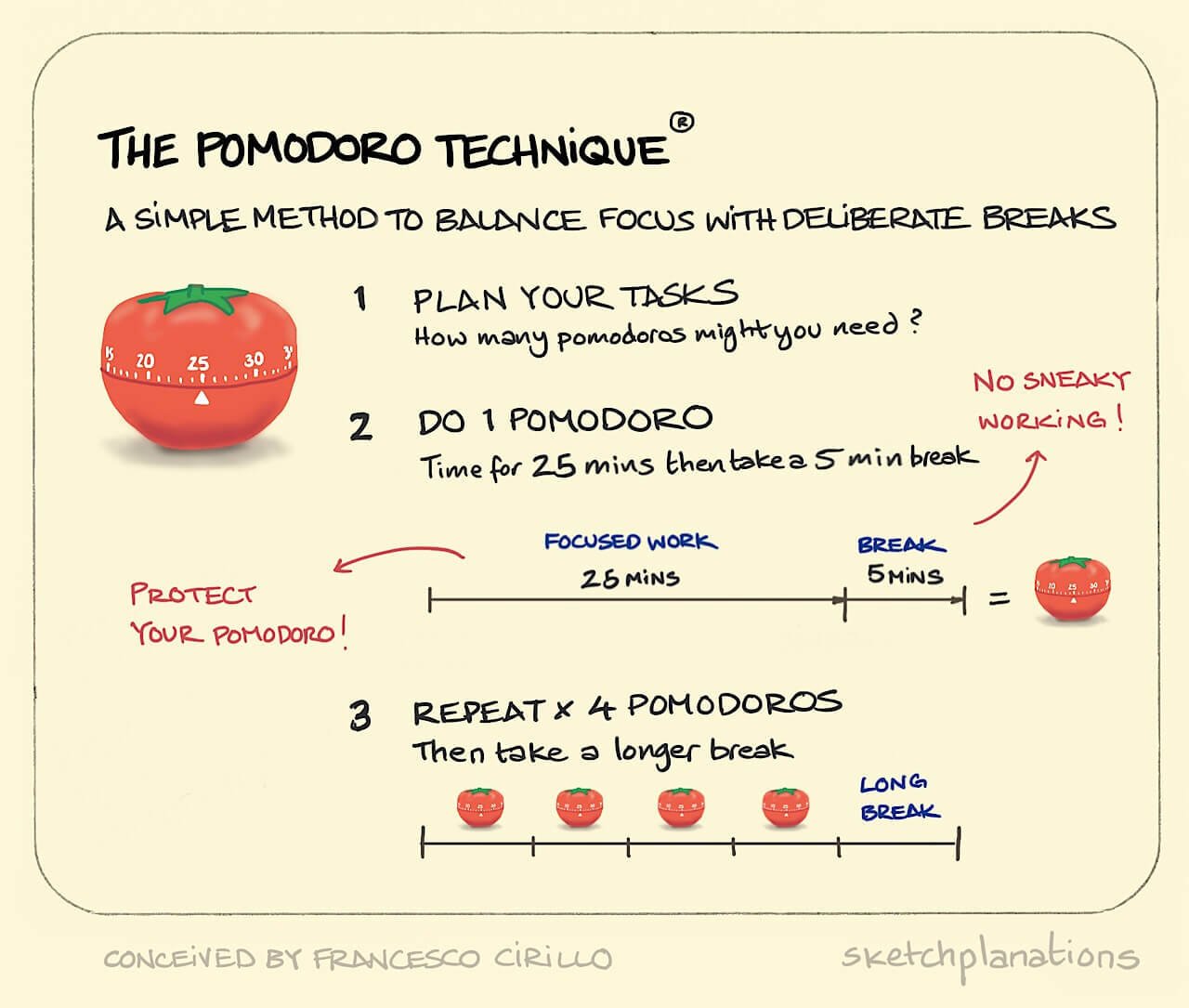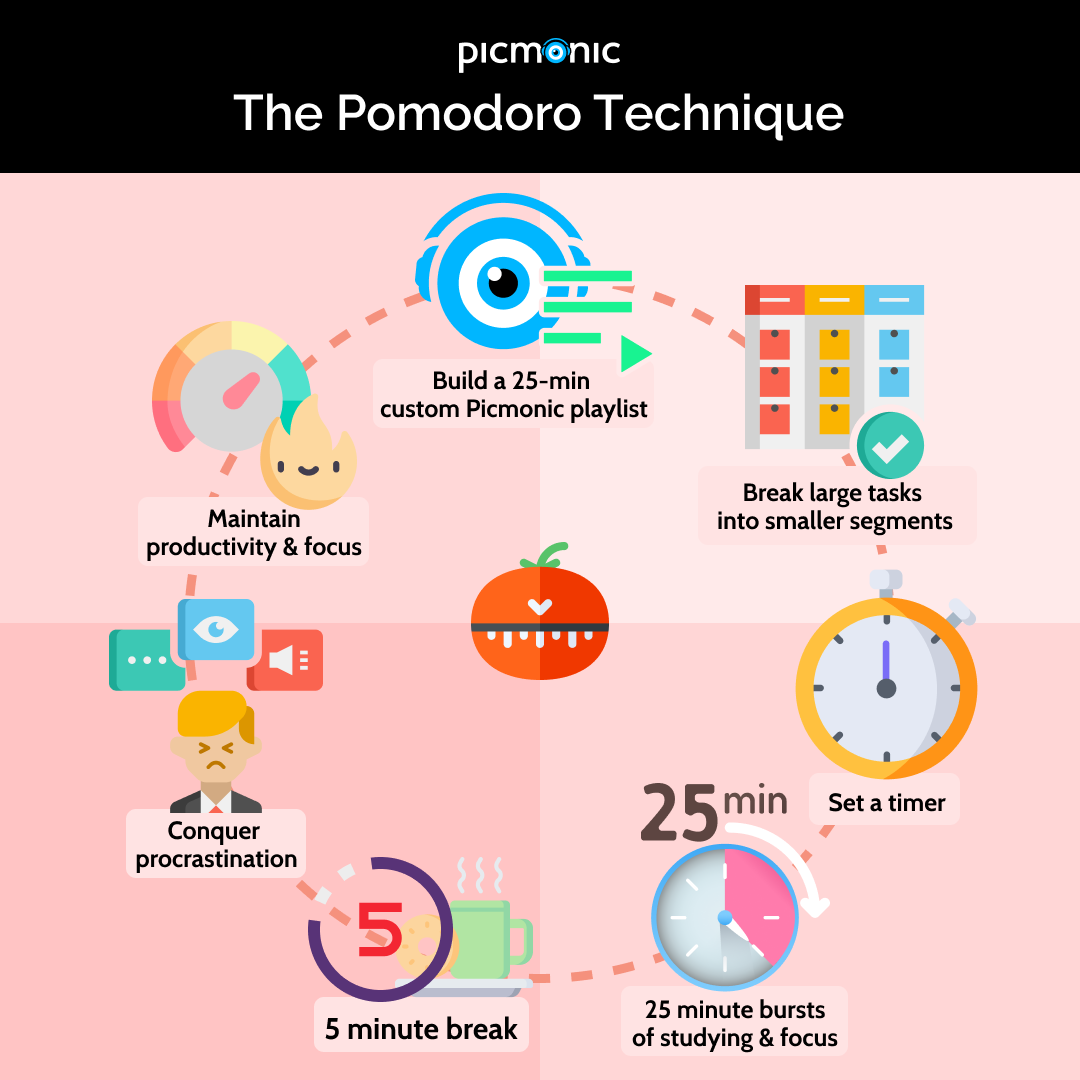

#Pomodoro break windows
I ended up using this ratio for years now, and have this 50 minutes browser timer bookmarked on my work laptop, and use the Windows default clock app on my personal computer.ĥ0 minutes focus time allows sufficient time to warm up and “enter the zone” for difficult problems, and isn’t too long to cause noticeable mental fatigue. In terms of break time, I found that 10 minutes was better than 5 minutes break (for every 50 minutes focus), due to the longer time it took to completely recharge from a proportionally longer focus block. coding something complex) 50 minutes focus, 10 minutes break (mid-high frequency)Īfter experimenting with other ratios, I found that having breaks before hitting the 1.5 hour mark yields the best result for me, to avoid mental fatigue and rejuvenate my mind.ĥ0 minutes focus time also allows sufficient “warm up time” for diving into a difficult problem. However, due to deep work needing a longer “warm up period”, 25 minutes of focus can be too short for certain types of tasks (e.g. One short break every 25 minutes is great for sustaining energy, and avoiding mental fatigue. Since deep work on certain types of difficult problems often require some time for the brain to get into the zone, like a “warm up period”, I found that context switching after only 25 minutes left some focus time on the table when it came to brainpower intensive deep work.Ĭaveat: for tasks that have a lot of context switching built in, and don’t require as “deep” of a focus, such as responding to messages and emails, this ratio works fine for me. However, since I’ve been training my ability to focus for years, 25 minutes of focus time started to feel short. I’d used this ratio with much success - in 2017 it helped me pass the CFA level 1 exam in 6 weeks of study (which is commonly known to take ~300 hours of study to achieve). This is the “default” pomodoro technique’s focus time to break time ratio. 25 minutes focus, 5 minutes break (very high frequency) Mental fatigue also diminishes the ability to prioritize and leads to time-wasting rabbit holes. Going into rabbit holes ends up wasting me more time in the long run, since I could have identified the rabbit hole and changed direction, if I had only taken a break earlier to refresh.ģ hours of high focus work is too long without a break - leads to mental fatigue, which lowers the true output/time ratio. This is because as my mind becomes more fatigued, my ability or energy to prioritize on the fly diminishes.

This is something I’d prefer to avoid, as a preventative measure - when this happens, it accumulates stress and fatigue that could lead me to burnout if left unchecked.ģ hours of high focus without a break is verging on the border of being outright unproductive for me, but it may be different for others.Īnother downside of focusing for too long and taking breaks at a low frequency is that the longer the focus time, the more likely I am to go into a rabbit hole. Without a timer, the focus length can often get out of hand, eventually causing brain fog. This is due to inertia - without a timer to remind me to take a break, I continue on focusing on the task at hand until it’s complete, or until I get so tired that I am forced to take a break out of discomfort. Once I’ve entered the zone (flow), and am very focused on a task such as coding or writing a blog post, it’s actually difficult for me to take a break. 3 hours focus, 10 minutes break (very low frequency) In this post I’ll walk through several experiments I’ve done to optimize my focus time to break time ratio, by changing their lengths and frequency, and how they impacted my overall productivity. I’ve been tempted to cut these break times short, or remove them entirely, but the result was a huge dent in my productivity. I’ve been a longtime user of the pomodoro technique, where one focuses on a task for 25 minutes, and then takes a break for 5 minutes.


 0 kommentar(er)
0 kommentar(er)
